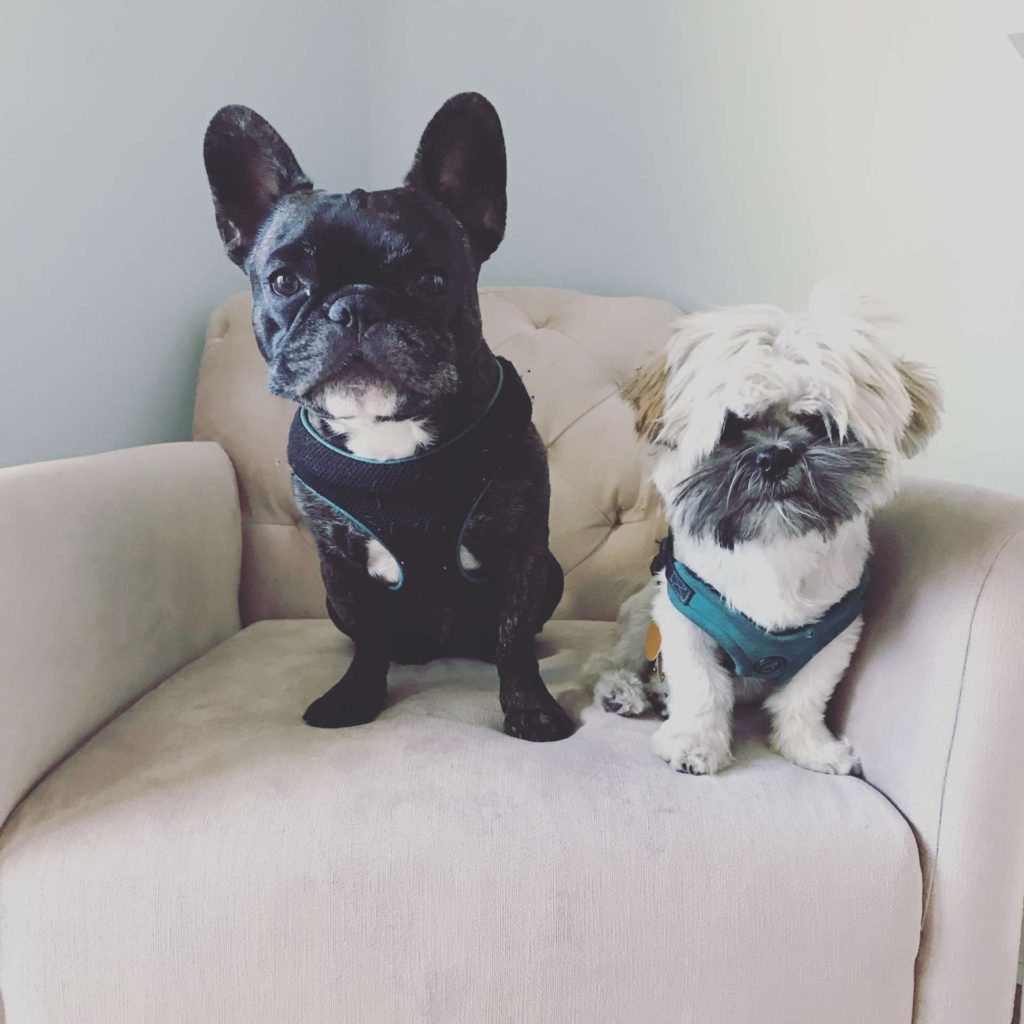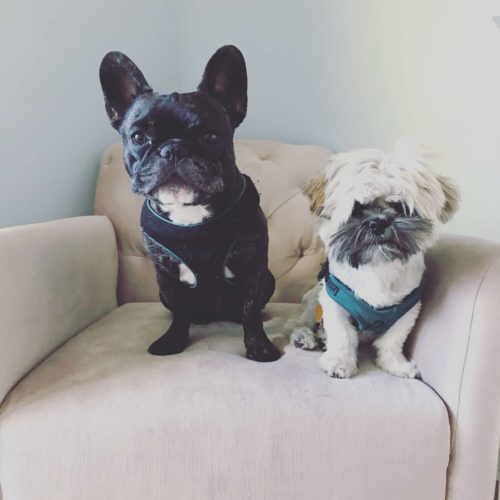If you’re planning on bringing home a new, furry, four-legged family member, you might feel a little lost. We’re here to tell you that you’re not alone, and more importantly, give you some important tips {from a professional} to keep in mind during the process. Our friend and dog trainer, Lauren Jones Wenzel of Semper Fido Dog Training came up with a full guide with key pointers to help you adjust with your new pal — check it out below:

1. Do Your Research and Prepare, Prepare, Prepare
It can’t be stressed enough how important it is to be prepared for a new dog. That doesn’t just mean buying a dog bed, some food bowls, and a leash. Bringing home a dog or puppy is a lifetime commitment. Are you in it for the long haul? Are you planning to have a baby soon? What happens to the dog then? Is this type of dog prone to certain health issues or illnesses? What if it starts to exhibit health or behavior issues – are you prepared to pay for potentially expensive treatments or training? Too often when life gets busy or unexpected things happen, the dog is {unfortunately} the first to go. {Serious aggression or behavior problems are another story – sometimes rehoming really is in the dog’s best interest or for family’s safety}.
Life with a new dog can be rocky at first, so do your best to learn about the breed, know what level of energy and exercise to expect and make sure the dog you think is ”so cute” will actually fit your lifestyle and activity level {or be willing to adjust}. If you are a first-time dog owner {and no, growing up with a family pet that was mostly cared for by your parents doesn’t count!}, seek the help of a qualified trainer to help get things on the right track early.
2. 3 Days, 3 Weeks, 3 Months
Especially when adopting a rescue dog, patience is key. The stress of a shelter and the change of environment {even when coming from a good foster home} is traumatic and scary for your pup. Many dogs spend the first week or two being very subdued, sleeping a lot, and being generally very quiet. This can often be the result of your new pal decompressing from all that change, and it often suppresses some of their natural behavior.
Be prepared that in many cases, you will see little changes and progressions of your dog’s personality after a few days, a few weeks, and a few months, as they start to settle in. You might suddenly see barking on leash, chewing, or bursts of energy that didn’t happen at first. There will be peaks and valleys as they come out of their shell, so don’t give up or panic! Just be sure to employ some help {like a good trainer!} to work through any trouble spots.
READ: Dog Park Etiquette: What to Know Visiting with Your Pup{s}
3. Exercise {not just the physical kind}
Most of us underestimate the amount of exercise our dog/puppy needs. Many behavior problems can be greatly helped by giving the dog more outlets for their energy – barking, chewing, jumping up, mouthing, and even anxiety and reactivity can all often be helped by making sure your dog gets adequate exercise every day.
Making your dog think and work is an equally {if not more important} part of their learning and exercise. Teaching them tricks, games, and training, in general, can provide great mental exercise. Use puzzle toys to help give your dog more mental stimulation, which will also dispel some of that energy, especially when he or she will be left alone or in their crate.
You can feed meals from a puzzle toy or use it for a treat at times you need to keep your pup busy. Fill them with treats or kibble {dry dog food}, or spread the inside with peanut butter or yogurt or liverwurst – whatever your dog likes. As he or she gets better at emptying them you can freeze the ingredients so it’s harder to get the food out. Canned dog food or plain canned pumpkin work well as binders to layer/mix and freeze with kibble. You may need to start with just loose treats or kibble so it falls out easily, making it easier for your pup to learn what to do. Below are links to several good puzzles to try.
Remember, except for the Kong and Busy Buddy toys, these toys are not intended to be chew toys themselves, so take them away once your pup has extracted all the treats:
Kong
Kong Wobbler
Tricky Treat Ball
Twist N Treat
4. Communication is Key
It’s important that you understand how your dog communicates so that you can avoid inadvertently doing things that he or she finds threatening or uncomfortable. Dog behavior is mainly about avoiding conflict — in the wild, a dog wants to avoid fights whenever possible in order to prevent injury and conserve valuable energy. Dogs are primarily body language readers/communicators, so they give all kinds of physical signals to let other dogs/animals/humans know they mean no harm, or to calm down a tense situation — turning the head away, turning the body away, raising one front paw, doing quick tongue flicks/licks of their lips/nose, avoiding eye contact, greeting in a curving motion rather than direct approaches, splitting up two animals/people who appear to be in conflict by moving between them, yawning, or doing a displacement behavior like sniffing the ground or scratching.
You will also want to be on the lookout for more assertive, pre-reaction behaviors – standing tall and forward on the toes, hair on the back/neck standing up, closed mouth with the corners of the mouth forward, ears pushed forward, inability to break stare, growling, showing teeth, and overall body tension/stillness. Humans routinely greet with direct eye contact, direct frontal approaches, reaching over the head, leaning over the dog {especially small dogs}, and using the high pitched “soothing” baby voice. All of these are threatening dog body language and can cause stress, especially in a shy or fearful dog.
Avoid staring right into a dog’s face, pet under the chin instead of over the head, always ask permission to greet a dog, or to let your dog greet them, and respect it when the owner says no. You never know what issues someone has been working through, and how far the dog may have come – ignoring an owner’s refusal can undo a lot of hard work very quickly.
I also recommend the books below – they’re great references for learning to recognize & understand dog communication signals.
Canine Body Language, by Brenda Aloff
The Other End of the Leash, by Patricia McConnell
Dog Sense, by John Bradshaw
The Culture Clash, by Jean Donaldson
For the tech savvy: there’s a great app available on Google Play + Apple Store called Dog Decoder App.
5. Choose a Reward Marker
As humans, we often focus too much on correcting or punishing what we don’t like, without ever telling our dogs what we want them to do instead. I can’t tell you how many times I see people walking their dogs and giving harsh, irritated jerks of the dog’s leash when he pulls or goes to sniff something they don’t want him to, or barking a command like “Heel!” over and over to no avail. Yet, if asked whether the dog was ever taught to walk on leash politely or “heel”, they say no. Owners can think of it like this: you wouldn’t want to work at a place where you were not shown what to do, where things are, or what protocols to follow, yet anytime you did something wrong or incorrectly, you receive a nasty electric shock to your neck.
In positive reinforcement training, a word or a clicker is used to mark the moment that your dog does what you are asking for, or performs a behavior you like. “Yes!” is commonly used, but you can use any word you like, as long as it is short, {preferably one syllable so you can say it quickly to precisely mark a behavior}. As long as you are consistent – once you pick your word, don’t change it and make sure everyone who works with your dog uses the same one.
See More: All About Wise Animal Rescue + How to Get Involved
Once you have picked your word, or purchased your clicker, you need to load it — this means you need to teach your dog that “Yes!” or the clicker’s click equals a treat. Do a few short sessions of just saying “Yes!” and treating. It doesn’t matter at this point what behavior your dog is doing, just “yes!” and treat, “yes!” and treat {or click/treat if you are using a clicker}. You are looking to see that your pup’s head starts whipping around when they hear “yes!” or click, showing anticipation of a treat at that word/sound and a positive association with it. This allows you to mark a correct behavior the moment it happens, even if the puppy is not right next to you, and even if the behavior is short lived and happens quickly. This way when a treat appears a few seconds later, puppy knows why he received it.
Now your dog has a way of understanding which behavior has earned the treat so he can repeat it. Make sure when your dog does something you like, you let them know- click/”yes!” and treat, praise, give some cuddles, throw a toy – whatever your pup likes. Your dog is more likely to repeat rewarded behaviors and to cease behaviors that don’t produce rewards, so when they get it right, let ‘em know.
Special thanks to Lauren Jones Wenzel of Semper Fido Dog Training for the tips + writing this post exclusively for Hoboken Girl <3
To get in touch with Lauren, please email semperfidonj@gmail.com or call (973) 922-3436.
Have you gotten a new pup recently and find these tips helpful? Share any additional tips in the comments below!










